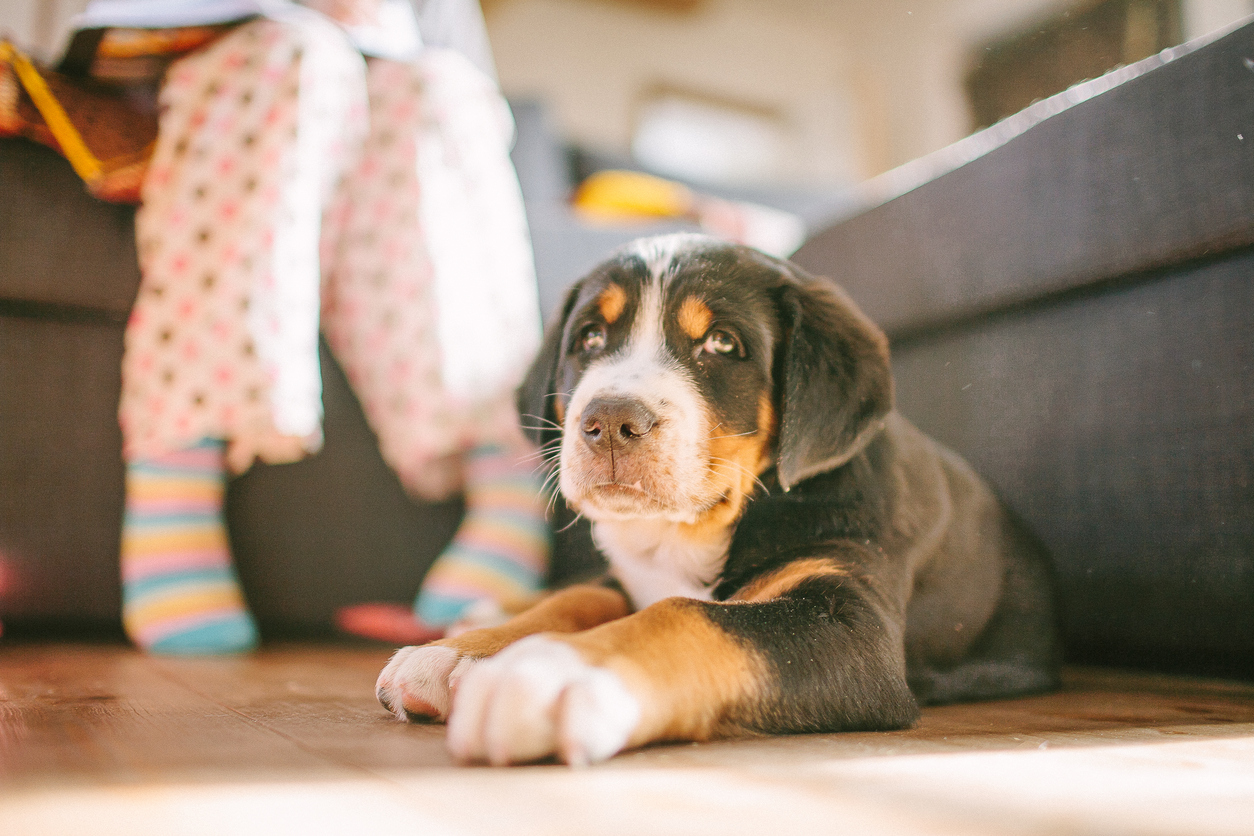Pet hair on its own doesn’t cause allergies, but it’s the vehicle that transports the real culprit of human allergies: pet dander – flakes of skin very much like human dandruff. More specifically, the proteins in the skin flakes cause an allergic reaction in some people. The protein in cat dander that is the most irritating is called Fel D1; in dogs, this protein is called Can F1. These proteins can remain in a house and cause allergies for up to six months after a pet is removed. Knowing how to minimize your exposure to pet dander can help you cope with your allergy to pets.
How Pet Dander Causes Allergies
Pet dander is not necessarily flaky and visible. In fact, micro-size dander is often so small that it easily becomes airborne. So, if you’re allergic to pets, even if you don’t come into direct contact with an animal, you are susceptible to allergens merely by being in the same room with a pet or in a room where a pet has been.
The proteins in pet dander will not just cover the areas and furniture where pets walk and lay. Pet dander proteins land on countertops and tabletops; stick to walls and ceilings; become ingrained in curtains and blinds; and fall to rest on appliances, chairs and beds.
People who have pets in the house are exposed to dander proteins almost every moment of the day. If you have recently moved in with a person who has a pet, or are thinking about getting a pet, there are a few things you can do to keep allergens away.
Keep Your Pet Clean
The first thing to do when living with a pet is to keep the pet clean. The cleaner you keep your pet, the less hypoallergenic dander proteins become spread around your house. Washing a pet weekly is not always sufficient, especially if your pet spends a lot of time outside. Pets that spend time outdoors bring other allergens into the house, like dust and pollen. If possible, wash your pet before you let it back into the house.
Keep Your House Clean
If the air in your home is clean, your risk of allergies is reduced. HEPA filters are the most efficient and thorough air filters. In addition to keeping the air clean, these filters also keep the rest of the house cleaner, as the particulates (dust, pollen, pet dander, and so on) in the air do not settle down onto furniture, curtains and appliances.
In addition, you need to keep all surfaces clean and hygienic. Chemical disinfectants are the most potent household cleaners. For example, ammonia and chlorine (bleach) are the most effective surface cleaners. For destroying protein compounds in fabrics like curtains and furniture coverings, alcohol and hydrogen peroxide are efficient.
Set Boundaries for Your Pet
In addition to keeping your house clean, it is important to set boundaries for your pets to ensure they’re not allowed in certain rooms of the house, such as your bedroom or kitchen. Keeping doors closed and installing portable indoor fences can help keep pets off the furniture.
Choose a Hypoallergenic Pet
Not everyone thinks of a bird or a lizard as the ideal pet, and hairless cats and dogs are not for everyone. But managing a dog’s movements is much easier than managing those of a cat. No breed of dog is 100 percent hypoallergenic, but some breeds are better than others for people with pet allergies. The best breeds of dogs for people prone to pet allergies are those with very short hair, such as Teddy bear, Lhasa Apso, poodle and schnauzer.


